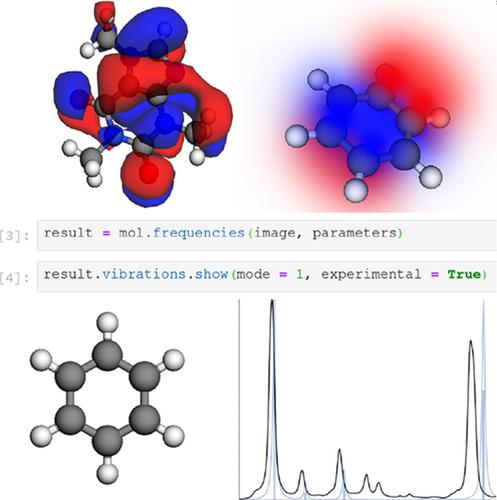当前位置:
X-MOL 学术
›
Int. J. Quantum Chem.
›
论文详情
Our official English website, www.x-mol.net, welcomes your
feedback! (Note: you will need to create a separate account there.)
Open Chemistry, JupyterLab, REST, and quantum chemistry
International Journal of Quantum Chemistry ( IF 2.3 ) Pub Date : 2020-09-17 , DOI: 10.1002/qua.26472 Marcus D. Hanwell 1, 2 , Chris Harris 1 , Alessandro Genova 1 , Mojtaba Haghighatlari 3 , Muammar El Khatib 4 , Patrick Avery 1 , Johannes Hachmann 3, 5, 6 , Wibe Albert Jong 4
International Journal of Quantum Chemistry ( IF 2.3 ) Pub Date : 2020-09-17 , DOI: 10.1002/qua.26472 Marcus D. Hanwell 1, 2 , Chris Harris 1 , Alessandro Genova 1 , Mojtaba Haghighatlari 3 , Muammar El Khatib 4 , Patrick Avery 1 , Johannes Hachmann 3, 5, 6 , Wibe Albert Jong 4
Affiliation

|
Quantum chemistry must evolve if it wants to fully leverage the benefits of the internet age, where the worldwide web offers a vast tapestry of tools that enable users to communicate and interact with complex data at the speed and convenience of a button press. The Open Chemistry project has developed an open‐source framework that offers an end‐to‐end solution for producing, sharing, and visualizing quantum chemical data interactively on the web using an array of modern tools and approaches. These tools build on some of the best open‐source community projects such as Jupyter for interactive online notebooks, coupled with 3D accelerated visualization, state‐of‐the‐art computational chemistry codes including NWChem and Psi4, and emerging machine learning and data mining tools such as ChemML and ANI. They offer flexible formats to import and export data, along with approaches to compare computational and experimental data.
中文翻译:

开放化学,JupyterLab,REST和量子化学
如果量子化学想充分利用互联网时代的利益,就必须发展。在互联网时代,万维网提供了大量的工具,使用户能够通过按按钮的速度和便利性与复杂数据进行通信和交互。开放化学项目开发了一个开放源代码框架,该框架提供了端到端解决方案,可使用一系列现代工具和方法在网络上以交互方式生成,共享和可视化量子化学数据。这些工具建立在一些最佳开源社区项目的基础上,例如用于交互式在线笔记本的Jupyter,3D加速可视化,包括NWChem和Psi4的最新计算化学代码以及新兴的机器学习和数据挖掘工具例如ChemML和ANI。
更新日期:2020-11-25
中文翻译:

开放化学,JupyterLab,REST和量子化学
如果量子化学想充分利用互联网时代的利益,就必须发展。在互联网时代,万维网提供了大量的工具,使用户能够通过按按钮的速度和便利性与复杂数据进行通信和交互。开放化学项目开发了一个开放源代码框架,该框架提供了端到端解决方案,可使用一系列现代工具和方法在网络上以交互方式生成,共享和可视化量子化学数据。这些工具建立在一些最佳开源社区项目的基础上,例如用于交互式在线笔记本的Jupyter,3D加速可视化,包括NWChem和Psi4的最新计算化学代码以及新兴的机器学习和数据挖掘工具例如ChemML和ANI。











































 京公网安备 11010802027423号
京公网安备 11010802027423号